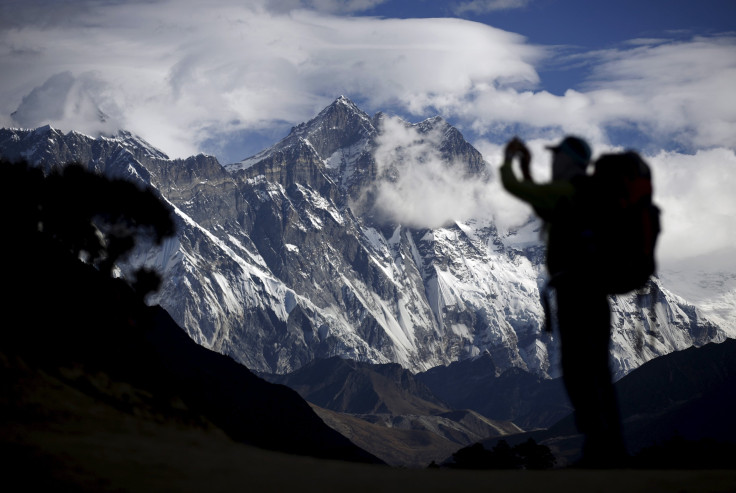Military Amputees' Mount Everest Attempt: 2 Veterans Of Iraq War Look To Climb Toward History In Nepal

Two U.S. military veterans could become the first combat amputees to reach the summit of the highest mountain in the world, Mount Everest. The former soldiers, who are both missing their right leg, plan in the next two months to demonstrate — separately but at roughly the same time — that their disabilities from injuries sustained following tours of duty in Iraq do not define them.
“There is a pressure to show the world that I can climb Mount Everest,” Chad Jukes, a 31-year-old former Army reserve staff sergeant who lost his leg in 2006 from a roadside bomb, told USA Today. “To say, 'I have one leg, but I can climb Mount Everest. I have PTSD, but can climb Mount Everest. I have a traumatic brain injury, but I can climb Mount Everest.'”
Jukes' climbing partner, Thomas Charles “Charlie” Linville, 30, lost his leg in 2011. The duo have become skilled at climbing mountains with prosthetics since their injuries. Linville said part of his motivation is to show he doesn’t need the pity he has often received since his injury.
“Getting to the top I kind of view as vanquishing those demons, showing all these people that, 'Don't you have pity for disabled veterans, because we're capable of so much more than you think, ” Linville said.
The two will be on different teams as they attempt the 29,029 foot ascent in Nepal. Linville has attempted the climb twice before with the Heroes Project. Jukes’ climb is being sponsored by U.S. Expeditions & Explorations.
A stunning photo of Mount Everest, Earth's highest mountain, located in the Mahalangur section of the Himalayas pic.twitter.com/xQC9fQmpW1
— M Barak Cherguia (@CherguiaMbark) March 30, 2016
Jukes and Linville are two of more than 50,000 American troops who have been wounded in the Iraq and Afghanistan wars since they began following the Sept. 11, 2001, terror attacks and the ensuing conflict after the wars were officially ended. Of those injuries, 2.6 percent have suffered major limb amputation, according to a 2014 Congressional Budget Office report.
The trip to the top of Mount Everest is a dangerous affair and is known for its difficulty. Amputees in particular risk frostbite on their stumps because of decreased blood flow. Since 1953, when the mountain was scaled for the first time, around 4,000 people have made it to the summit.
Due largely to the increased assistance of guides and better gear, around 56 percent of attempts in 2012 were successful, compared with just 18 percent in 1990. There have been about 250 deaths on the mountain, most of which occur at altitudes higher than 8,000 meters, when oxygen levels fall dramatically and terrain and weather conditions are much harsher.
© Copyright IBTimes 2024. All rights reserved.






















